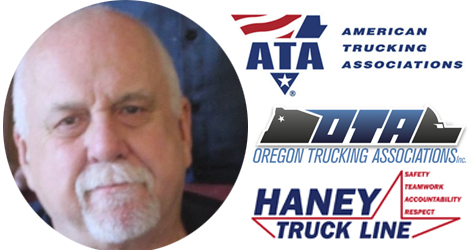
4 Ways Fixing Company Culture will Decrease Your Driver Turnover
posted in Alerts by Brian Gray
4 Ways Fixing Company Culture will Decrease Your Driver Turnover
Is company culture the real culprit of driver turnover today?
By Mike Meredith, former Oregon Trucking Associations president and Director of Professional Development at Haney Truck Lines.

The shortage of qualified drivers is the number one problem facing the trucking industry today. According to the American Trucking Associations, the industry will need about 175,000 more operators over the next 5 years.
This demand is mostly driven due to drivers moving from one company to another while only 8% is the result of industry growth. Trucking has had a high turnover rate for as long as I can remember and continues to climb above 90% for truckload carriers.
What the industry is doing to “solve” the high turnover rate
Low wages, truck-driving lifestyle, and tougher regulations on drivers, are often cited as the reasons for the industry’s high turnover. Two approaches to solving this issue seem to be gaining the most attention:
- Industry lobbyists are pushing for changes in regulations to allow younger drivers (those aged 18–20)
- Focus on creative recruitment strategies and sign-on bonuses
What astonishes me, however, is the fact that a large percentage of drivers leave within the first 90 days of coming onboard a new company. From what I can see, we’re spending a lot of time and energy on solving symptoms rather than addressing root causes.
Perhaps the best approach lies right under our nose: focusing on retaining the drivers we already have by addressing issues such as:
- Driver compensation
- Work-life balance
- Supervisor relations
- Making your company a better place to work
The Core of the Problem is Company Culture
Every organization—whether it’s a trade association, or a trucking company—has its own unique culture. Organization culture includes the beliefs, attitudes, and opinions that are shared by the workforce about how their company should operate.
Your organization’s culture forms the basis on how your organization treats its employees, its customers, and the community.
Culture can make or break a company, and high turnover is one such example. Unfortunately, you may not always be aware of how your employees and customers are being treated.
Your new drivers’ will certainly learn about your company culture quickly and you may have a serious culture issue if they’re leaving your company within 90 days of hire.
Drivers’, probably more than most other employees spend a lot of their time thinking about how your organization’s culture affects their lives. When they’re driving down the same highway day after day, they tend to reflect on these things. Their perceptions may not always be correct, but if there’s one thing I learned in the political arena, “perception IS your reality”.
You can end up throwing a lot of money at the symptom, and you’ll still not find qualified workers who stay with you. At some point, the desperation to fill seats can cause you to hire unqualified drivers. This, in turn, may result in n higher insurance premiums and lower safety scores.
How do you fix Company Culture?
Spending your time addressing the symptoms won’t solve the problem, no matter how much money you want to throw at it.
Retaining your top drivers will ultimately come down to whether or not they perceive that your organization values their contributions and cares about their well-being.
Here are four ways to fix your company culture:
- Take advantage of driver committees by listening to your employees’ problems or praises to help improve the company
- Provide an annual survey to learn more about how your culture is perceived
- Conduct exit interviews on those leaving your company to help identifying cultural issues
- Don’t start off on the wrong foot with new drivers, conduct scheduled check-ins on new drivers in their first 180 days working for you.
You can keep your top performers but only when you become aware of and act on cultural issues. This includes how the people you have in supervisory positions are interacting with their subordinates. Remember, drivers still leave their managers, not the company.






